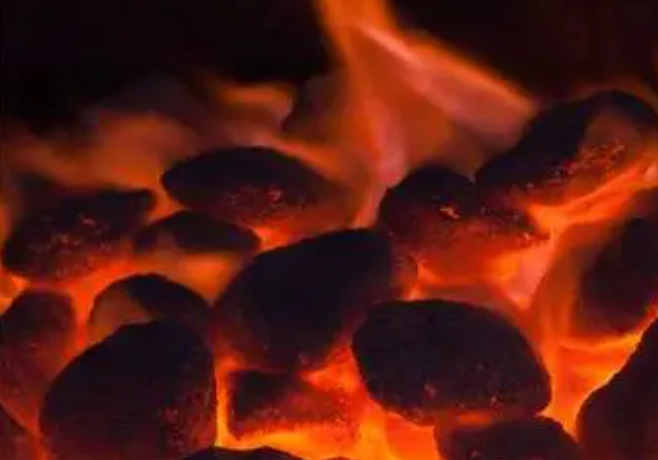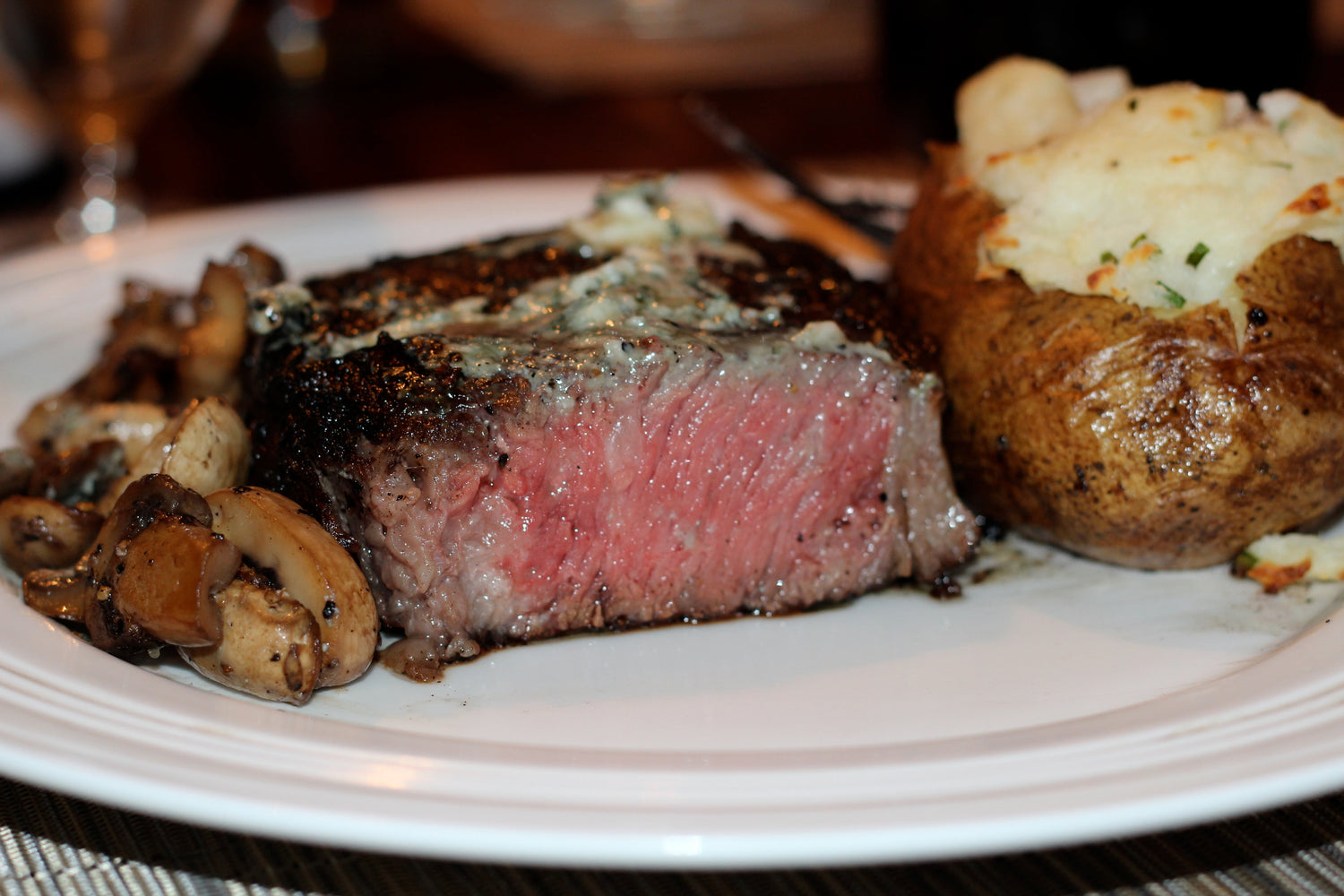Welcome to Meathead Talks, a series of curated article summaries from AmazingRibs, the site that covers everything from everything from kitchen science to myth-busting to tips for upping your grill game. All articles are written by the Meathead, a brilliant chef and self-proclaimed Barbecue Whisperer whose culinary word are heeded as gospel in many circles.
Gas or Charcoal?
"The most frequently asked question since 'Chicken or Egg?'" Meathead proclaims. While "the flame war between charcoal purists and gas hotheads burns brighter than the debate between Mac and PC users," he points out that there is waaaay too much garbage-posing-as-information in various blogs and BBQ message boards. This post intends to set the record straight.
Reading this post prepares you to speak with confidence on these 4 points:
1. What's a Grill Good For?
2. Gas vs Charcoal: What difference can you taste?
3. Pros and Cons of Charcoal Grills
4. Pros and Cons of Gas Grills
The 3 Essential Grilling Styles
a) High heat direct radiation cooking like steak. No lid.
b) Indirect heat convection for roasting whole chickens and pork or beef roasts. Heat source off to the side. Meat cooks with warm air circulating around it. Lid closed.
3) Indirect smoke convection roasting. Lid closed. Warm convection airflow heavy with flavorful hardwood smoke.
What Your Tongue Knows
Searing. Browning the meat surface, especially steak causes the caramelizing chemical reaction known as the Maillard reaction. This creates rich, complex, sweet & savory compounds your tongue craves. Searing also provides that satisfying crunchy crust by drying the surface. It does not seal in juices (see Meathead's myth buster on that topic). Meathead also insists that a good even sear is much preferable to fancy grill stripes.
Charcoal grills outsear gas simply because they produce superior direct infrared heat. The rare expensive gas grills might include special sear burners that can do the job.
While charcoal might be the better choice for searing at home, Meathead reminds us that "probably 90% of the world’s greatest and most expensive steakhouses grill their rare aged prime beef with gas." The high price of a steakhouse experience also translates to high price special equipment: special broilers that heat simultaneously from above and below "at blowtorch temps." A restaurant gas broilers typically heats meat surfaces to 800°F to 1,200°F. A typical backyard gas grill might deliver temps in the 500°F range. Those rare gas grills with a sear burner can get up to 900°F or more in small areas, but most are narrow, allowing you to sear 1-2 steaks at a time. Not helpful for a party, or even a family meal. Since most a properly prepared bed of charcoal can provide up to 900°F along a surface wide enough for a grill full of steaks. This is why charcoal grills win the backyard test for a flavorful sear.
Smoke. Charcoal makes more tasty smoke than gas. Because charcoal is burning complex organic molecules. Gas is a simple molecule, and should burn clean producing no flavor, just H2O and CO2.
Of course, adding a bit of hardwood to the fuel or letting drippings hit the hot surfaces below the meat will produce more flavorful smoke. Since drippings are mostly water, fat, and protein, plus marinade or sauce, they vaporize and condense on the meat. Quick cooking foods like burgers, thin steaks and hot dogs won't have much chance to take up the vapor flavor, but big chunky steaks, whole chicken or turkey are more likely to benefit from the indirect flavoring of drippings on a gas grill.
When cooking low and slow, you will notice more flavor cooking of both charcoal and gas. Of course, charcoal mixed with distinct types of wood chips will give a bolder flavor than the bacon-y smoke that can be achieved on a propane grill. Neither is necessarily superior. It's a matter of taste.
Ignition: the other flavor difference. Both starter fluid and self-igniting charcoal give off an unpleasant petrochemical smell that can get into the food. Use a charcoal chimney, a torch, or an electric charcoal starter. Meathead strongly recommends the chimney. "Faster and easier, and needs no outlet."
The mercaptan myth. For safety, the smelly compound mercaptan is mixed with natural gas and propane so we can detect a leak. There is a myth out there that cooking with gas imparts that foul taste and aroma into the food we are grilling. AmazingRibs.com science advisor Professor Greg Blonder says this is “A complete falsehood. When gas burns, the mercaptans turn into sulfur dioxide, which becomes sulfuric acid due to the water produced by combustion. The small amount of sulfur deposited on your food when burning gas is orders of magnitude less than naturally present in food, or added with garlic or onion powder in rubs, or found in the smoke from burning charcoal or wood. Natural gas is a very clean burning fuel.”
AmazingRibs.com equipment reviewer Max Good says “No one turns their nose up at Grandma’s holiday turkey and homemade pie because she cooked with gas. Likewise some of the best barbecue restaurants use gas burners as do many of the best steak houses. Clearly this is nonsense.”
Take those comments to the next grill fest and debunk the stinky myth.
Charcoal grills: Pros and cons
Charcoal lovers. "Charcoal purists are passionate and border on rabid," Meathead says. "From a taste standpoint, they do have a point." The high heat you can achieve on just about any charcoal grill quickly produces the delicious, crispy crust while the center remains pink. Whether you grill longer and slower over developing coals or make quick work of burgers and dogs over the ashed over coals, the smoke flavor is superior to anything the average gas grill can deliver.
Charcoal haters. Of course, where there's fire, there's risk. Many local fire codes prohibit charcoal grills from many residences. With gas, just turn a knob and--poof--the flame is out. Charcoal is messy, hard to light, takes some patience to get to temp, and requires management of flare-ups to avoid potential health risks. It can be hard to measure or maintain temp. If cooking low and slow, you need to supplement charcoal and manage oxygen flow to keep the heat consistent. And then there's always the ask to dispose of long after the party is over.
Meathead's temp advice: "Since charcoal grills do not have temperature dials to raise or lower temp, it is important to learn how to set up a 2-zone fire which helps you regulate heat by moving meat from the hot to the not-so-hot zone, and learn how to control the energy of the fire by closing off the oxygen intake vents. They are your temperature dials."
Know-how and proper tools make it easy to surmount these charcoal grilling challenges: gloves, tongs, chimney, squirt gun, ashtrays, and a good, reliable oven thermometer are tools of a grillmaster.
Charcoal: The bottom line: Flavor. Cooking with charcoal will deliver the most impressive flavor, with practice.
Meathead admits: "Yes, it is the flavor, but for me, a lot of the fun is the ritual and the thrill of playing with fire."
Gas grills: Pros and cons
Sales of gas grills sales surpassed charcoal grills in 1994. Now more than 60% of grills sold are gas. The reason is a no brainer: ease and control.
Gas lovers. Control and convenience. That's all most folks need to hear to be sold. Easy to start, hot within 10-15 minutes, maintain steady temp, can be cranked up or down at the twist of a dial. They usually have a layout that makes it simple to arrange for indirect or multi-zone cooking. And easy to clean--or forget to clean. For those burgers after work, there's nothing quicker than a gas grill.
Gas on-the-fencers Consider:
Temp control. While gas grilling provides steadier temp, it's not foolproof. Weather can makes your 275°F dial setting true on the perfect summer day, but 225°F under on a cool, windy day or 300° on a steamy August afternoon.
Meathead strongly recommends having both a good digital oven thermometer that you can clip to the cooking surface near the meat AND a good digital meat thermometer to gauge actual meat temp. Most built-in grill thermometers are worthless: badly placed in the center, unable to account for hot and cold sides, and misleading because of the "heat shadow" above a piece of meat as it cooks.
Easy cleaning. Yes, cleanup is easier. No ash. Vaporized drips. But carbon and grease buildup below burners need to be scraped or pressure washed every few months. This grease often catches fire and is difficult to put out without a fire extinguisher. Gas jets and venturis can clog. Plus, spiders or wasps may like to hide in the tubes. Then there are lava rocks or ceramics to replace every year, or so.
Accessories. Gas grills can come with side burners, rotisseries, storage drawers, bottle openers, side tables, spice racks, night lights. "There’s probably even one with a iPod player" exclaims Meathead.
Smoking. There are various ways to add smoke to gas, from foil packets to built-in smoke boxes. Meathead even tosses caution to the wind, placing wood chunks near the flame under the cooking grate. Important to the remember that gas grills invariably do no seal well, so the smoke tends to blow away.
Safety. While many safety features are in place, gas is explosive. Propane can flow and settle. Sparking mechanisms can fail. Windblown flameouts can happen. All in all, gas is slightly safer than charcoal because you can just turn a knob and shut off the tank.
Price. Gas grills are more expensive than similarly outfitted charcoal grills simply because of the controls and assembly is more complex. There are more parts to break and be replaced. Fuel is hard to compare, but certainly not the deal breaker, and neither is especially environmentally responsible.
The Winner
Ultimately and obviously, only you can be the judge of which is better for you. Both require study and practice. Both have their lovers and haters. Each does something better than the other. Grillmasters seldom have just one. In fact, real grilling pros seldom stop at just one for charcoal and one for gas.
We hope that this summary of Meathead's throw-down gives you some useful fuel for the next heated discussion around the grill, beer-in-hand.
To read this article in its entirety with many links to much more Meathead expertise click here: Charcoal Grill vs Gas Grill Throwdown: Let's Settle This Once and for All.
Taken from Meathead of Amazing Ribs: the Science and Art of Barbecuing and Grilling since 2005, with permission.




